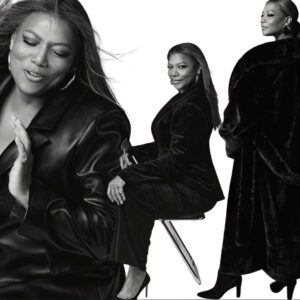Introduction
In a recent interview, Cillian Murphy, the extraordinary actor who brought to life the enigmatic Thomas Shelby in Peaky Blinders, opened up about his favorite scenes from the critically acclaimed series. As a cornerstone of modern television, Peaky Blinders has captivated audiences worldwide with its gripping storytelling, complex characters, and rich historical backdrop. Murphy’s reflections offer a unique glimpse behind the curtain, revealing the artistry and emotional weight that defines the show. With its ability to meld character development, emotional resonance, cinematic techniques, and fan engagement, Peaky Blinders stands as a testament to the power of collaborative storytelling in the contemporary entertainment landscape.
Character Development: The Evolution of Tommy Shelby
At the heart of Peaky Blinders is Thomas Shelby, a character whose evolution mirrors the tumultuous world in which he operates. Murphy emphasizes that the series meticulously crafts Tommy’s journey, allowing viewers to witness his transformation from a war-weary soldier to a ruthless gang leader, and eventually, a man striving for redemption. He points out pivotal scenes that encapsulate this evolution, particularly those that reveal Tommy’s vulnerabilities.
One such scene is the haunting moment when Tommy grapples with the trauma of war. The weight of his experiences is palpable, and Murphy’s portrayal invites audiences to empathize with a character often viewed through the lens of power and control. This depth is what distinguishes Peaky Blinders from other gangster dramas; it humanizes its characters, showcasing their inner struggles amidst the chaos of their surroundings. Murphy’s reflections on these key moments illuminate the careful thought that goes into character arcs, making Tommy Shelby not just a figure of fear, but a symbol of resilience and fragility.
Murphy highlights that the complexity of Tommy Shelby is not merely a product of the writing but also a result of the rich interplay between character and narrative. The scenes where Tommy interacts with his family, particularly with his brothers, serve as crucial touchpoints that explore themes of loyalty, betrayal, and the weight of expectation. These relationships ground Tommy, reminding the audience that beneath the hardened exterior lies a man shaped by love and loss.
Emotional Impact: Resonance Beyond the Screen
As Murphy delves deeper into his favorite scenes, he emphasizes the profound emotional impact they carry—not just for viewers, but for the actors themselves. The scenes that resonate most are those laden with raw emotion, where characters confront their deepest fears and desires. One particularly evocative moment occurs in the fourth season finale, where Tommy stands at the precipice of despair, wrestling with the ghosts of his past.
Murphy reflects on how these emotional scenes are crafted with sensitivity, allowing actors to tap into genuine feelings. He believes that the authenticity of their performances is what truly connects with audiences, drawing them into the narrative. The catharsis experienced by both the characters and the viewers creates a shared experience that lingers long after the credits roll.
This emotional depth is also a hallmark of the show’s writing. The dialogue is often rich with subtext, allowing for moments of silence to carry as much weight as spoken words. Murphy notes that scenes where Tommy is simply staring into the distance or processing grief are as powerful as those filled with action. The ability of the series to juxtapose intense emotional moments with quieter, introspective scenes speaks to its mastery in storytelling.
Collaboration with Filmmakers: A Collective Vision
Central to the success of Peaky Blinders is the seamless collaboration between Murphy and the talented filmmakers behind the series. He speaks highly of the directors and writers, emphasizing that their collective creativity enhances the storytelling experience. Each director brings a unique perspective to the table, shaping how key scenes are visualized and executed.
Murphy recounts working closely with director Steven Knight, whose vision for the series has been instrumental in crafting the show’s distinct tone. The way Knight approaches character development and plot progression allows for a richer narrative that evolves with each season. Murphy appreciates how Knight’s writing empowers actors to delve deeper into their roles, resulting in performances that resonate with authenticity.
The collaboration extends beyond writing and directing; it encompasses the entire production team. Cinematographers, editors, and production designers contribute their expertise to create a cohesive visual style that complements the narrative. Murphy underscores how the visual elements of Peaky Blinders—from its moody lighting to its meticulously designed sets—serve as a backdrop to the characters’ journeys. This synergy is vital; it ensures that every scene is not just a moment in time but a piece of a larger story woven together by a collective vision.
Cinematic Techniques: Visual Storytelling at Its Best
Murphy’s insights also shed light on the cinematography and direction that elevate Peaky Blinders into a realm of cinematic storytelling. He breaks down key scenes, explaining how visual elements contribute to the overall atmosphere of the series. The use of slow-motion during pivotal moments, for instance, allows viewers to absorb the weight of the characters’ actions and decisions.
One of the most striking aspects of the show is its ability to juxtapose violence with beauty. The breathtaking landscapes of post-war Birmingham serve as a stark contrast to the brutality of the Shelby family’s dealings. Murphy points out that this dichotomy is intentional, reflecting the duality of Tommy Shelby’s character. He is a man caught between ambition and morality, a theme that is mirrored in the show’s visual storytelling.
Additionally, the series employs a carefully curated soundtrack that enhances emotional moments. Murphy notes how the music complements the visual narrative, creating an immersive experience for viewers. The choice of contemporary songs juxtaposed with historical settings lends a modern sensibility to the storytelling, making the themes of love, loss, and power feel both timeless and relevant.
Fan Reactions: A Cultural Phenomenon
As Peaky Blinders has grown in popularity, so too has its fanbase, leading to widespread discussions and analyses of key scenes. Murphy reflects on how certain moments have sparked intense debates among fans, demonstrating the show’s impact on popular culture. The discussions surrounding Tommy Shelby’s decisions, moral dilemmas, and relationships illustrate how deeply viewers engage with the narrative.
Social media platforms have played a significant role in fostering this dialogue. Fans share their interpretations of scenes, create fan art, and even engage in spirited debates over character motivations. Murphy acknowledges the importance of this interaction, noting that it enhances the viewing experience and fosters a sense of community among fans.
Moreover, the impact of Peaky Blinders extends beyond the screen, influencing fashion, music, and even political discourse. The show has sparked trends in vintage clothing, as fans emulate the iconic styles of the characters. Murphy observes that this cultural phenomenon speaks to the series’ ability to resonate with audiences on multiple levels, making it more than just a television show—it’s a cultural touchstone.
Conclusion: An Artful Tapestry of Narrative and Emotion
Cillian Murphy’s insights into his favorite Peaky Blinders scenes not only deepen our appreciation for the series but also illuminate the artistry involved in bringing such a compelling narrative to life. Through the lens of character development, emotional impact, collaborative creativity, cinematic techniques, and fan engagement, Peaky Blinders emerges as a masterclass in storytelling.
As audiences, we are not merely passive observers; we are invited into the world of Thomas Shelby and his family, experiencing their triumphs and tragedies as if they were our own. The series transcends traditional genre boundaries, offering a rich tapestry of human experience that resonates across cultures and generations.
In reflecting on the emotional weight and artistic vision behind Peaky Blinders, we are reminded of the power of storytelling—how it can connect us, challenge us, and ultimately transform our understanding of the human experience. As we continue to engage with the world of Peaky Blinders, we celebrate not only the artistry of Cillian Murphy and his fellow creators but also the enduring legacy of a series that has captured our hearts and minds.





